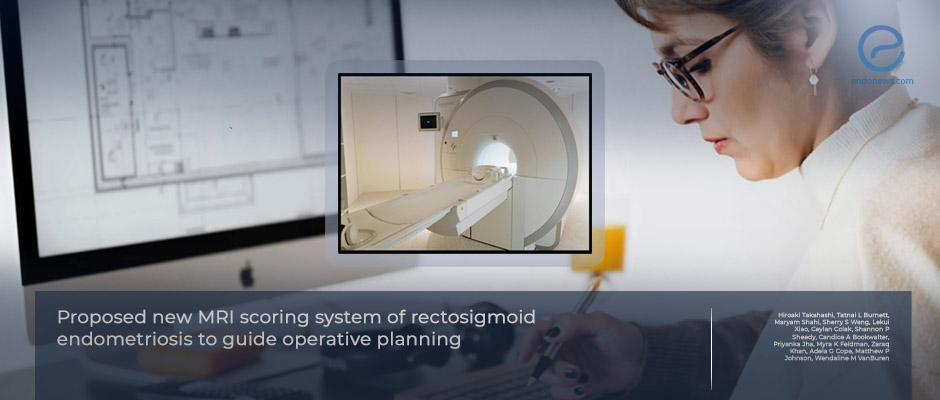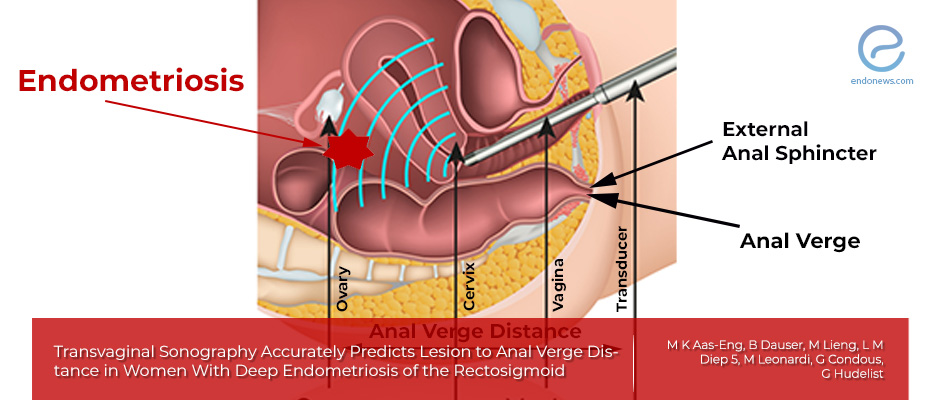MRI-Based Scoring System Predicts Surgical Approach in Rectosigmoid Endometriosis
Researchers in the United States have developed a new MRI-based scoring system to help predict which type of surgery may be required for patients with rectosigmoid endometriosis. The scoring system is designed to estimate the likelihood of muscularis propria involvement, a key factor that…
Key Points Lay SummaryPreoperative flexible sigmoidoscopy in patients with deep infiltrating endometriosis
Deep infiltrating endometriosis is defined as endometriotic lesions extending 5 mm or more below the peritoneal surface. Women with deep endometriosis have rectovaginal lesions affecting the tissue adjacent to, or directly involving the rectum and/or rectosigmoid colon with a 90%…
Key Points Lay SummaryPostoperative outcomes of laparoscopic rectosigmoid resection for bowel endometriosis.
Rectosigmoid endometriosis comprises 80-85% of all bowel endometriosis cases and can be localized in the rectovaginal septum, uterosacral ligaments, retro-cervical region, and parametrium. Symptoms of rectosigmoid endometriosis include abdominal bloating, constipation-diarrhea, lower-back pain, dyschezia, and sometimes cyclic rectal bleeding. Minimally…
Key Points Lay SummaryA review of multimodal imaging modalities for endometriosis.
Since there is a lack of non-invasive biomarkers to diagnose endometriosis clinically, imaging techniques such as transvaginal ultrasonography and MRI have significant importance in preoperative endometriosis diagnosis. These imaging techniques allow appropriate surgical planning before laparoscopic excision, especially in deeply…
Key Points Lay SummaryPlanning surgery for recto-sigmoid endometriosis with 3D virtual models.
Efforts to reduce the high complication rate of rectosigmoid surgery in deeply infiltrated endometriosis are of great interest to gynecologists. 3D printing, currently used in various surgical specialties to support surgical planning and guide intraoperative procedures may be a way…
Key Points Lay SummaryImaging Techniques Able to Predict Depth of Endometriosis Before Surgery
Transvaginal ultrasound (TVUS) and pelvic magnetic resonance imaging (MRI) performed by a specialist can accurately predict the depth of rectosigmoid endometriosis before surgery, according to a new study published in the Journal of Minimally Invasive Gynecology. Both approaches are similar…
Key Points Lay SummaryHow to measure the length of recto-sigmoid deep endometriosis reliably?
An in-depth assessment is needed when rectosigmoid deep endometriosis is decided to be treated surgically. Surgery carries a lot of risks and it is not always easy to decide which procedure the patient would benefit the most from. Patient-oriented surgical…
Key Points Lay SummaryOperative techniques for Deep Endometriosis Surgery - Shaheen Khazali, MD
In this presentation, Dr. Shaheen Khazali, an endometriosis surgeon specialized in gastrointestinal and urinary tract endometriosis excision and in neuropelveology, talks about the general principles and some techniques for endometriosis surgery focusing on rectovaginal endometriosis. He also describes the "ten…
Key Points Lay SummaryPrevalence, Risk factors and Management of Bowel Fistula after Rectosigmoid Surgery for Deep Endometriosis
Bowel fistula is a severe complication after the colorectal endometriosis surgery, but little is known about its prevalence, and reports on large series are lacking. To discuss specific management on colorectal deep endometriosis, Roman et al. conducted a retrospective study…
Key Points Lay SummaryTransvaginal sonography for predicting the distance between rectosigmoid endometriosis and the anal verge
For optimal surgery, pre-surgical assessment of the distance between rectosigmoid deep endometriosis lesions and the anal verge (Lesion to Anal Verge Distance-LAVD) is recommended by many specialists. A group of researchers from Norway, Austria, and Australia studied the accuracy of…
Key Points Lay SummaryThe accuracy of "lower endoscopic ultrasound" for the preoperative diagnosis of rectosigmoid endometriosis
Endometriosis affects reproductive-aged women most frequently with a prevalence of 5% to 15%. If the endometriotic lesions involve the bowel especially sigmoid colon and rectum, this subtype of endometriosis is named as "bowel" or "rectosigmoid" endometriosis. Rectosigmoid endometriosis is encountered in…
Key Points Lay SummaryMRI or TVS for accurate diagnosis of rectosigmoid endometriosis?
Rectosigmoid endometriosis (RE) is seen in about 90% of patients with bowel endometriosis. Rectosigmoid is the region between the rectum and the sigmoid colon, which is a region easily accessed and assessed by two most common noninvasive imaging modalities –…
Key Points Lay SummaryPreoperative factors to predict unresponsiveness in women undergoing endometriosis surgery
Endometriosis is defined as the localization of endometrial glandular and stromal cells outside the uterine cavity. Despite extensive research, the optimal management of endometriosis still remains unclear. Several treatment options include analgesic medication, hormonal treatments, and surgical intervention. There is…
Key Points Lay SummarySurgical techniques for rectosigmoid endometriosis, and functional outcomes
Rectosigmoid endometriosis is defined as the infiltration of bowel wall with the endometrial-like glands and stroma, reaching at least the muscular layer. Rectosigmoid endometriosis is encountered in approximately 8-12% of patients with a diagnosis of endometriosis. The most commonly involved…
Key Points Lay SummaryTransvaginal ultrasound for "rectosigmoid endometriosis" diagnosis: Is bowel preparation necessary?
Rectosigmoid endometriosis is a severe form of deep endometriosis. Women having rectosigmoid endometriosis present with pain and several intestinal complains such as constipation, diarrhea, intestinal cramping, abdominal bloating, feeling of incomplete evacuation, the passage of mucus and rectal bleeding during…
Key Points Lay SummaryThe diagnostic value of “sliding sign” and direct visualization of the bowel in rectal/rectosigmoid deep endometriosis
Deep endometriosis is the presence of endometrial subperitoneal implants of ≥5 mm localized in the rectum/rectosigmoid bowel, uterosacral ligaments, rectovaginal septum, vagina and/or bladder. The most common diagnostic screening methods are the transvaginal ultrasound (TVS) and magnetic resonance imaging (MRI)…
Key Points Lay SummaryUsing the "Mushroom Cap" sign to describe endometriotic masses
Endometriosis is a disease whereby ectopic endometrial cells attach and grow outside of the uterus. A number of imaging techniques have been used to evaluate and assess endometriotic lesions. Magnetic resonance imaging (MRI) is a type of imaging modality used…
Key Points Lay SummaryLaparoscopic Bowel Resection Can Be Beneficial Rectosigmoid Endometriosis
Riiskjær et al. recently published a paper titled “Pelvic Pain and Quality of Life Before and After Laparoscopic Bowel Resection for Rectosigmoid Endometriosis: A Prospective, Observational Study” in Diseases of the Colon & Rectum. This paper focuses on the effects…
Key Points Lay SummaryWith so many imaging tools and modalities, which one should be used for endometriosis?
Intestinal endometriosis affects 5 to 12% of women with endometriosis and commonly presents as dyschezia, rectal bleeding, cyclic defecation pain, constipation, and diarrhea. Currently, surgical treatment includes segmental rectal resection with colorectal anastomosis, but it is often riddled with complications.…
Key Points Lay Summary
 By Özge Özkaya
By Özge Özkaya

 By Hale Goksever Celik
By Hale Goksever Celik

 By Selma Oransay
By Selma Oransay




 By Eylül GÜN
By Eylül GÜN



 By Timur Seckin
By Timur Seckin


 By Demet Candaş Green
By Demet Candaş Green





 By Murat Osman
By Murat Osman

 By Kasthuri Nair
By Kasthuri Nair
